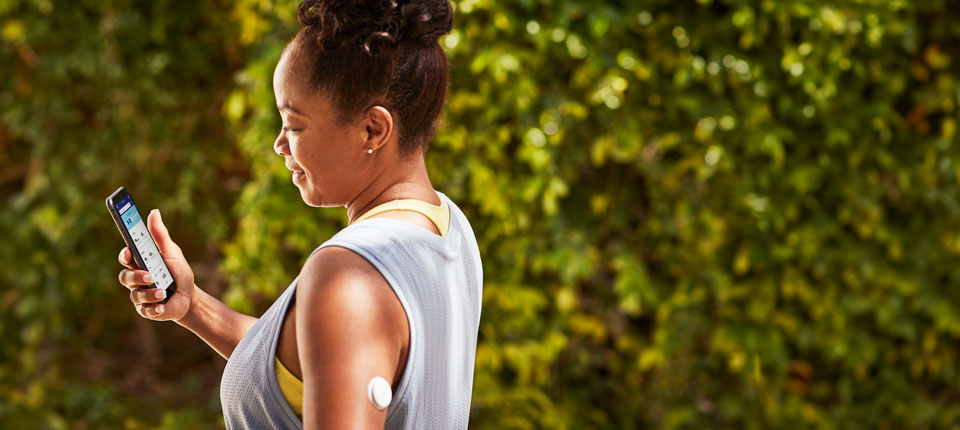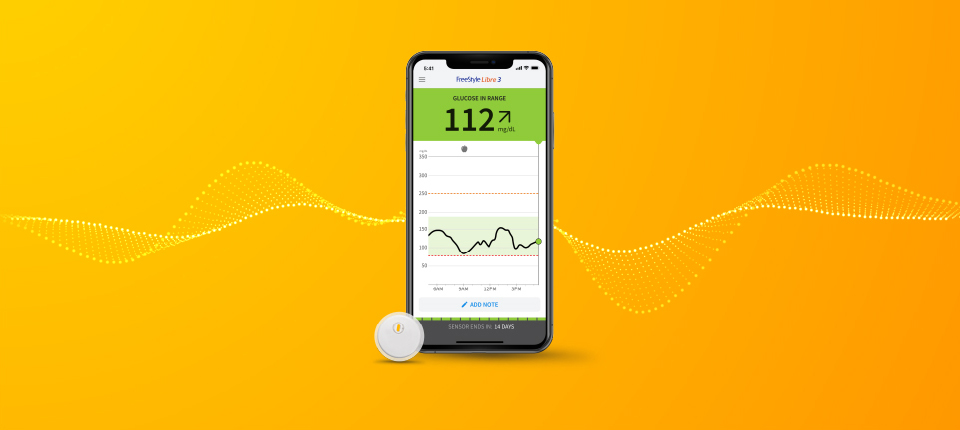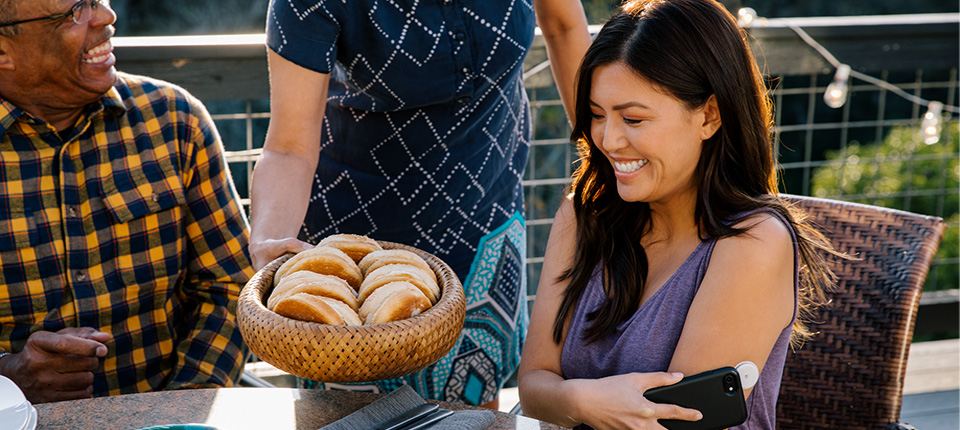What’s in: Getting active — starting with a walk.
There’s no question that being active is good for you.
However, 39% of adults with diabetes reported being physically active, compared to 58% of adults without diabetes, according to a U.S. survey.4 If getting moving feels daunting, consider starting small and try going for a walk. According to a study that compared walking for 30 minutes at any time of the day to walking 10 minutes after three main meals a day, the latter option may be more ideal to help reduce blood glucose levels.5
Steadily increasing your walking time better protects against heart disease. Research that followed people living with Type 2 diabetes over eight years found that people who walked at least two hours a week had a 34% lower heart disease mortality rate compared with people that were sedentary.6
Take the first step by purposefully incorporating a walk after every meal. Eventually, you’ll be able to consider moving up to other physical activities that can also help with diabetes and heart disease, such as resistance training.7
What’s out: Not setting up time to speak with your healthcare provider.
It’s important to make time to connect with your healthcare provider each year — especially to check in about your ABCs:1
- Get an A1C test, which is a simple blood test that measures your average blood glucose levels over the past three months. Your doctor can help define what your target range should be.
- Have your blood pressure checked.
- Check your cholesterol levels to ensure they’re not too high.
- Talk about any smoking habits that can impact your risk level.
If you have any questions about how to change your routine based on what your CGM is revealing about your glucose levels, an appointment is a great opportunity to walk through the data, talk about your current habits and plan for any changes that could help decrease your risk for heart disease.
What’s in: Protecting your heart.
What’s out: Avoiding change — this is the year you make lifestyle changes to take control of your health.
These materials are not intended to replace your doctor's advice or information. For any questions or concerns you may have regarding the medical procedures, devices and/or your personal health, please discuss these with your physician.
The testimonial relays an account of an individual's response to the treatment. This patient's account is genuine, typical, and documented. However, it does not provide any indication, guide, warranty or guarantee as to the response other persons may have to the treatment. Responses to the treatment discussed can and do vary and are specific to the individual patient.
* The user’s device must have internet connectivity for glucose data to automatically upload to LibreView.
** The LibreView data management software is intended for use by both patients and healthcare professionals to assist people with diabetes and their healthcare professionals in the review, analysis and evaluation of historical glucose meter data to support effective diabetes management. The LibreView software is not intended to provide treatment decisions or to be used as a substitute for professional healthcare advice.
References
1Centers for Disease Control and Prevention. (2022, June 20). Diabetes and your heart. https://www.cdc.gov/diabetes/library/features/diabetes-and-heart.html
2Nitta, A., Imai, S., Kajiayama, S., Matsuda, M., Miyawaki, T., Matsumoto, S., Kajiyama, S., Hashimoto, Y., Ozasa, N., & Fukui, M. (2022). Impact of dietitian-led nutrition therapy of food order on 5-year glycemic control in outpatients with type 2 diabetes at primary care clinic: retrospective cohort study. Nutrients, 14(14), 2865. https://doi.org/10.3390/nu14142865
3American Diabetes Association Professional Practice Committee. (2023, December 11). 5. Facilitating positive health behaviors and well-being to improve health outcomes: Standards of care in Diabetes – 2024. https://doi.org/10.2337/dc24-S005
4Morrato, E.H., Hill, J.O., Wyatt, H.R., Ghushchyan, V., & Sullivan, P.W. (2007). Physical activity in U.S. adults with diabetes and at risk for developing diabetes, 2003. Diabetes Care, 30(2), 203-209. https://doi.org/10.2337/dc06-1128
5Reynolds, A.N., Mann, J.I., Williams, S., & Venn, B.J. (2016). Advice to walk after meals is more effective for lowering postprandial glycaemia in type 2 diabetes mellitus than advice that does not specify timing: a randomised crossover study. Diabetologia, 59(1), 2572-2578. https://doi.org/10.1007/s00125-016-4085-2
6Gregg, E.W., Gerzoff, R.B., Caspersen, C.J., Williamson, D.F., & Narayan, K.M.V. (2003). Relationship of walking to mortality among US adults with diabetes. Arch Intern Med, 163(12), 1440-1447. https://doi.org/10.1001/archinte.163.12.1440
7Michielsen, M., Raats, E.N.I.D., Bos, G., De Wilde, C., Decorte, E., & Cornelissen, V. (2023). Effect of resistance training on HbA1c and other cardiovascular risk factors in patients with type 2 diabetes: a systematic review and meta-analysis of randomized controlled trials. European Journal of Preventive Cardiology, 30(1). https://doi.org/10.1093/eurjpc/zwad125.206






FOLLOW ABBOTT